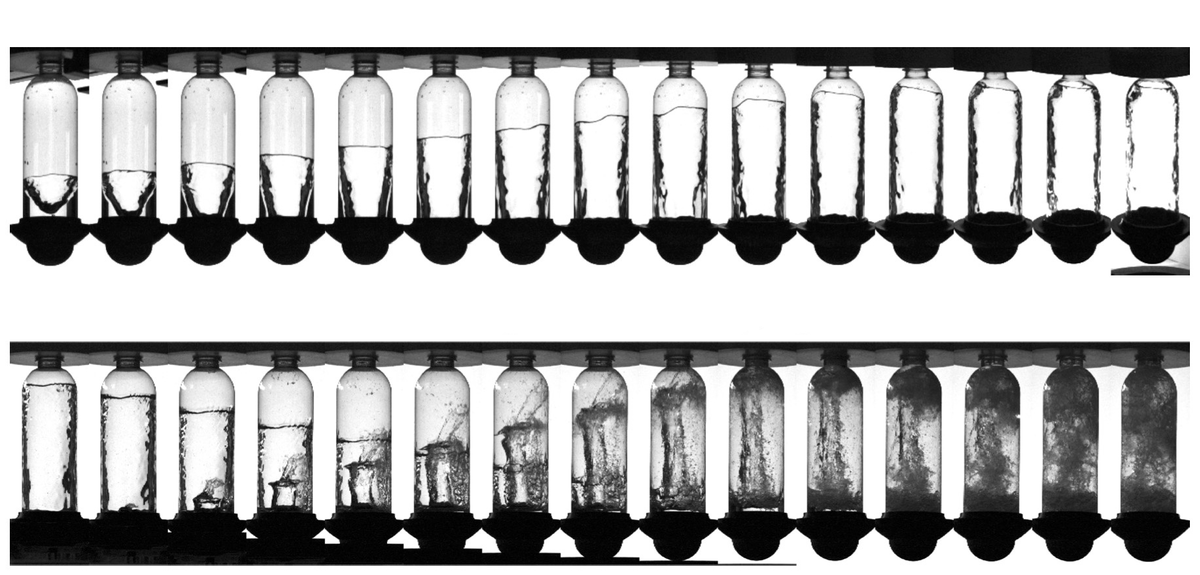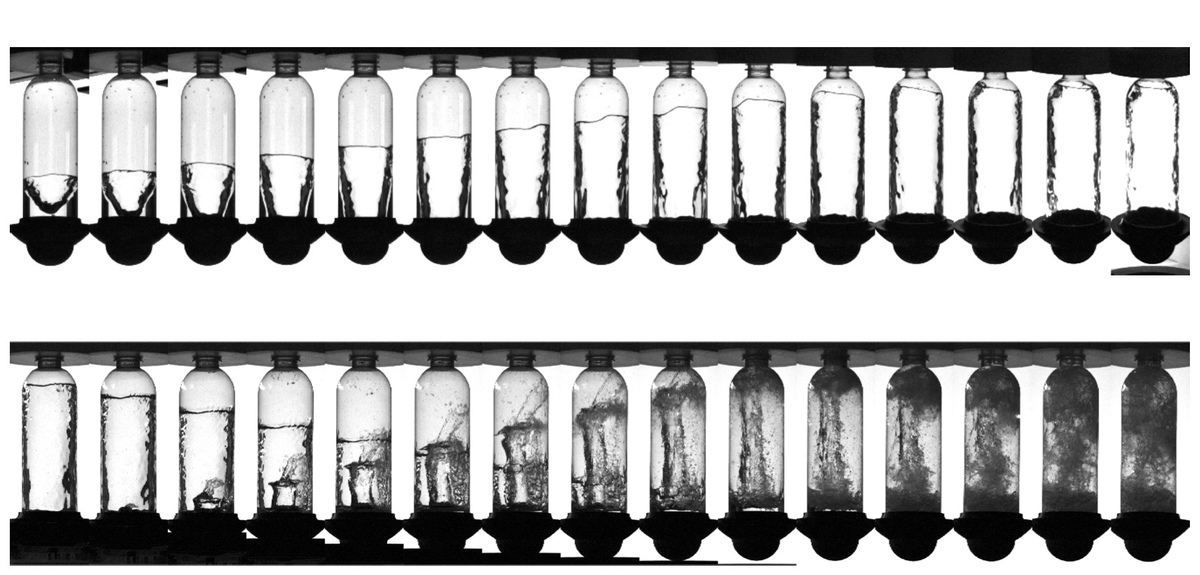Controlling the Bounce of a Bottle
With experiments that bring to mind a social media challenge, researchers demonstrated control over the bounce height of a dropped plastic bottle partially filled with water [1]. The team, led by Pablo Gutiérrez of O’Higgins University and Leonardo Gordillo of the University of Santiago, both in Chile, showed that initially spinning the bottle around a vertical axis strongly reduces the bounce height. The rotation forces water up along the walls, which, upon impact, generates a vertical jet in the center that can absorb much of the kinetic energy. Like a diver pushing downward on a diving board to gain height, the liquid in the jet pushes against the bottle as it moves upward, preventing the bottle from bouncing as high as it would if the water were quiescent.
While others have observed that fluid in a dropped container can affect its bounce [2], the new experiments are the first to use fluid rotation and the amount of water to systematically control the bounce height. The researchers developed a simple theory that agrees with the data and predicts that the most effective suppression of bouncing occurs with the highest rotation rates (they went up to 12.7 revolutions per second) and with the bottle about 40% full. They say that the mechanism they studied could apply to fluid transport in tank trucks or external fuel tanks of spacecraft, where planners could potentially reduce the effects of impacts by allowing extra volume in the container for fluid motion. The team encourages readers to try the experiments at home by swirling and dropping partially filled plastic bottles.
–David Ehrenstein
David Ehrenstein is a Senior Editor for Physics Magazine.
References
- K. Andrade et al., “Swirling fluid reduces the bounce of partially filled containers,” Phys. Rev. Lett. 130, 244001 (2023).
- T. W. Killian et al., “Rebound and jet formation of a fluid-filled sphere,” Phys. Fluids 24, 122106 (2012).





